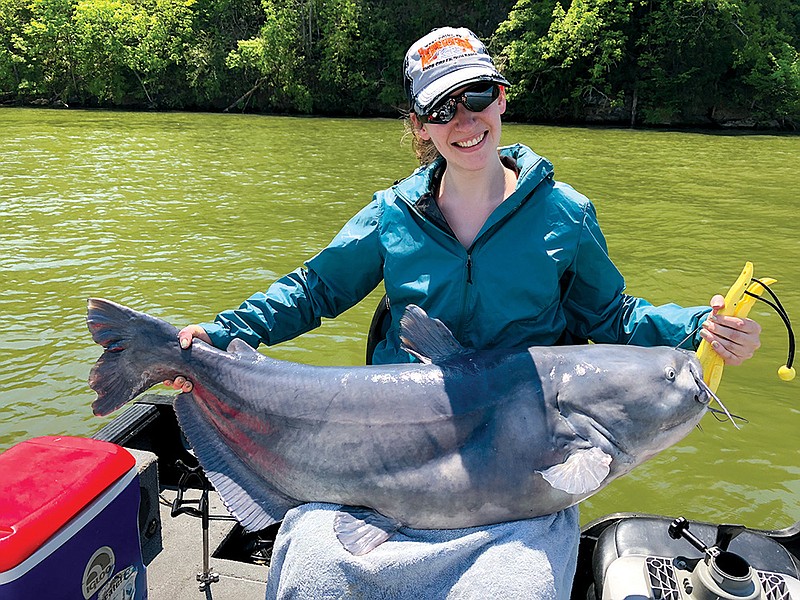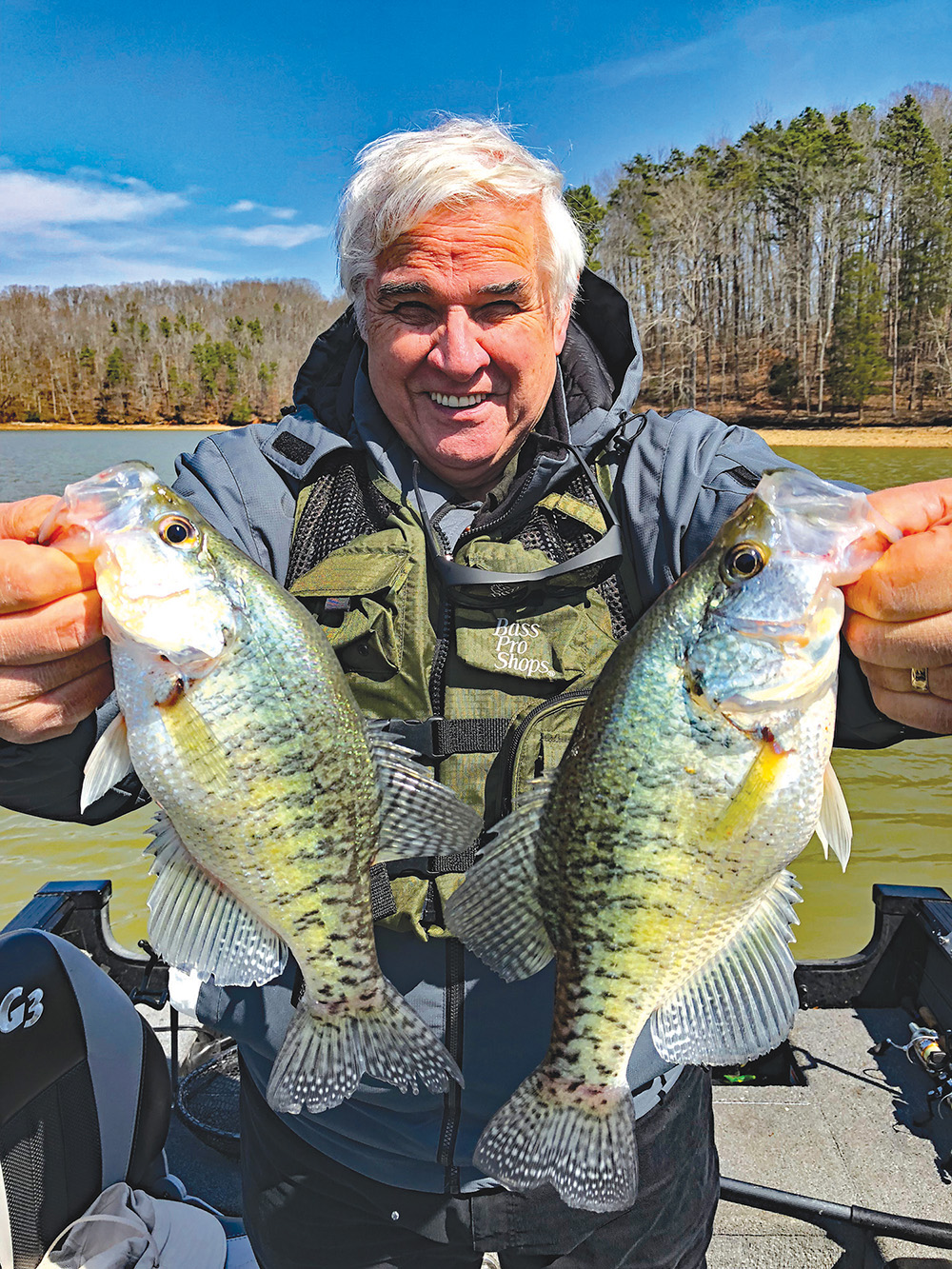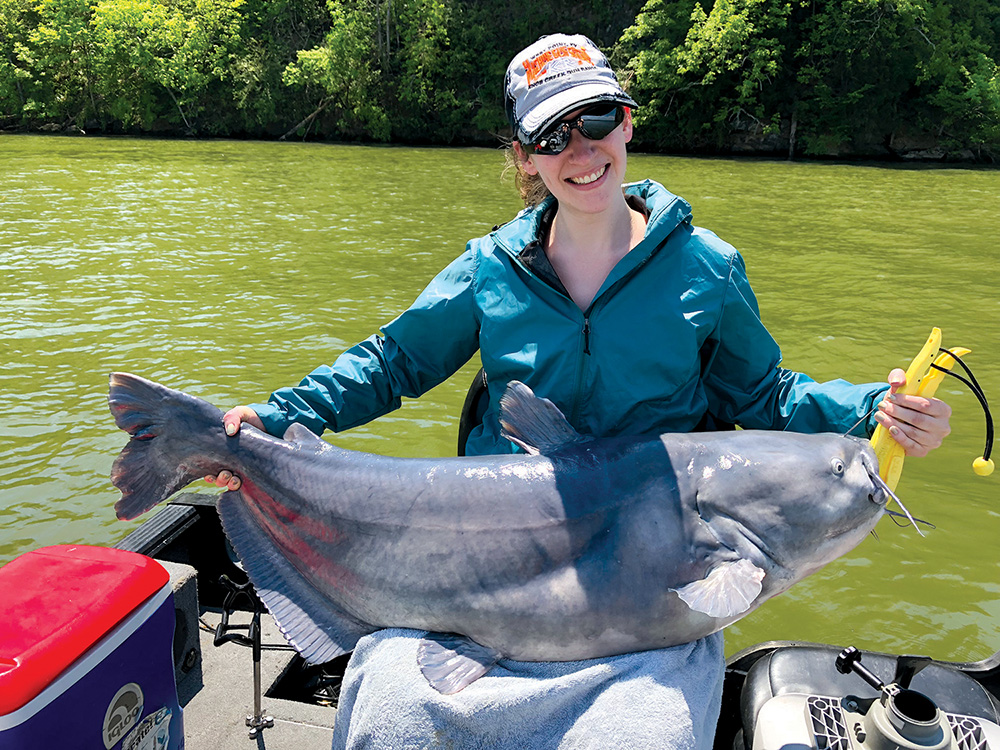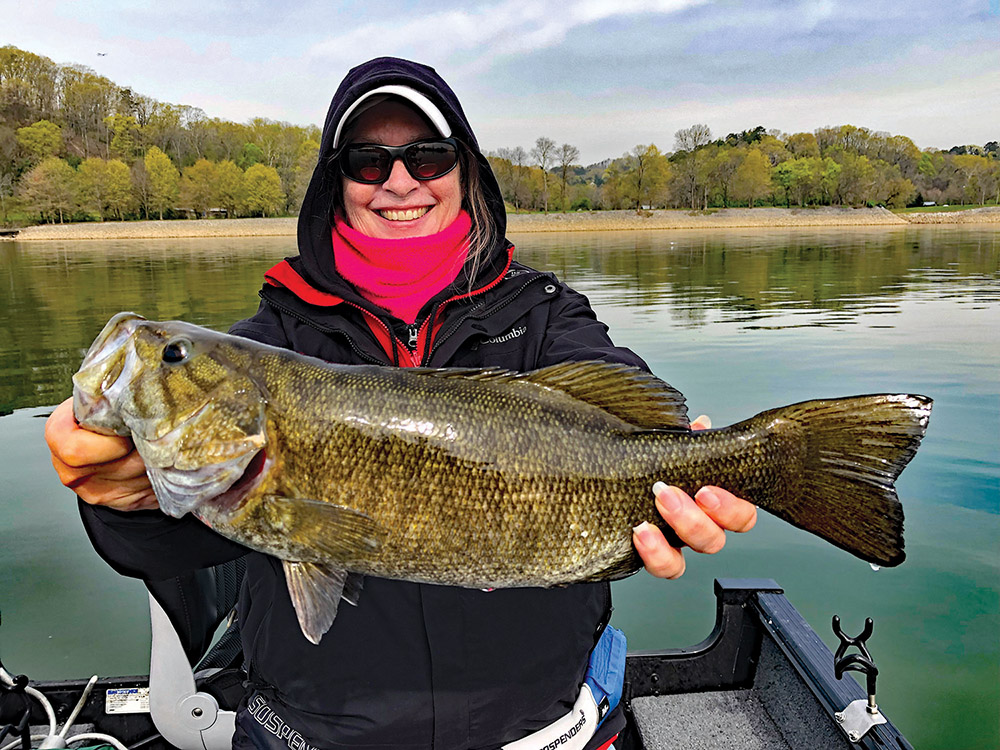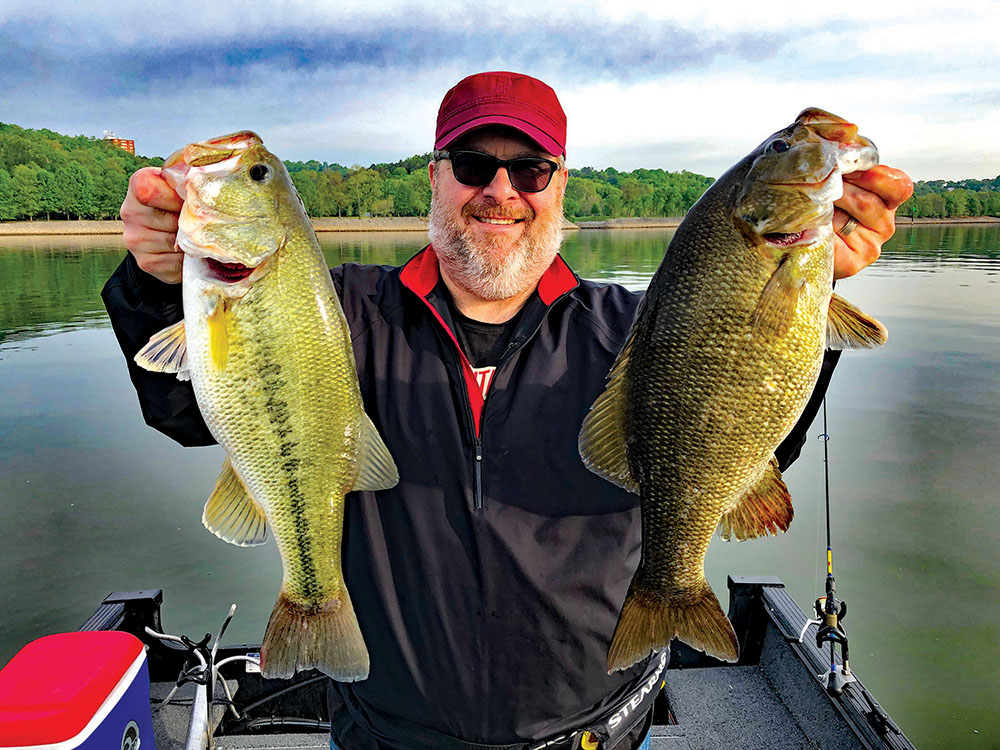About 20 years ago, the Tennessee Wildlife Resources Agency launched an experiment. They began introducing Florida-strain largemouth bass into Lake Chickamauga to mix genes with resident northern-strain largemouths. The intent was to determine if this 60-mile-long Tennessee River reservoir just north of Chattanooga had the right conditions to improve the fishery through hybridization of aggressive northern bass with larger-growing Florida bass.
Two decades later, the program is an unequivocal success. Chickamauga is now one of the best bass fisheries in the world, producing fish that weigh into the teens and some five-fish tournament limits in the 40-pound range.
The hype is warranted, but the new spotlight on largemouth bass has overshadowed world-class fishing for other species on the big river from Chickamauga down through Chattanooga. Scenic City Fishing Charters runs guided trips all over the area for largemouth bass as well as for smallmouth bass, catfish and crappie, and spring is a fantastic time to fish for all of them.
Owner and guide Richard Simms says the fishing heats up with water temperatures this time of year. So whether you're a novice seeking a good time or a seasoned veteran looking for the fish of a lifetime, right now is THE time to have lines out in the Tennessee River.
Here are Simms' best spring bites:
Crappie: These tasty and prolific sunfish provide easy fishing and fast action. Simms says he'd rank Chickamauga up there with any other regional crappie hotspot.
Right now through April, crappies are schooled-up preparing to head shallow for the spawn. Long-line trolling through those schools with a spread of six super-lightweight rods armed with colorful 1/16-ounce crappie jigs will load the boat in a hurry.
With a 10-inch minimum size limit and a 15-fish per person bag limit, Simms says they don't always limit out in a half-day trip, but 25 to 35 good keeper crappies can be expected.
Crappie fishing is the perfect trip for kids and inexperienced anglers as well as for experienced anglers seeking a cooler full of fillets for a fish fry.
Catfish: Blue cats are the dominant species of catfish on the Tennessee River, and they are an angler favorite because they are abundant, taste great and grow huge.
When flows are right, the tailrace below Chickamauga Dam all the way through downtown Chattanooga can be very good. When too much water is being released from the dam, Simms heads up to the reservoir.
Either side of the dam, catfish are in their pre-spawn period, which peaks in April. "Both fisheries hold great big catfish," says Simms, "and pre-spawn is a great time for catching trophy fish."
On the reservoir, deep drop-offs and river channel holes with structure are the places to vertical drop cut skipjack herring, bluegill or chicken breast. Below the dam, Simms drift fishes those same baits on light 10-pound tackle.
In 2009, Simms' client, Jerry Uhrine, caught a 52-inch-long, 75-pound blue catfish on 10-pound-test line. It is a National Freshwater Fishing Hall of Fame line-class record.
"That light tackle technique is really fun because the average catfish we catch is 5 to 10 pounds," says Simms. "Those 10- to 20-pounders aren't unusual, and every now and then we get one of those really big fish."
An average half-day trip April-October typically yields 50 to 100 pounds of catfish. "It's real easy to stock a freezer," he says.
Smallmouth Bass: Smallies are prized for tenacious fights. They grow strong navigating swift river currents, and in spring they feed aggressively in the first 7 to 10 river miles below Chickamauga Dam.
Simms says anglers who fish artificials catch smallies working jigs and soft plastics around rip-rap, current seams and edges. But the most productive technique he's found is to drift live threadfin shad or shiners with the current. With light 6-pound-test line enticing the most bites, even a 2-pound smallmouth is a handful. The ones he catches generally run from 2 to 4 pounds, and a pretty good trip sees 10 to 15 of these scrappy bronzebacks brought to the boat.
As an added bonus, everything in the river will eat a live shiner, so anglers should expect a mixed bag that also includes white bass, spotted bass, largemouth bass, crappie, yellow bass, catfish and maybe a striped bass.
Largemouth Bass: If bucketmouths are your thing, April is one of the best months of the year on Chickamauga. "They're coming out of those winter doldrums, and they're getting super-hungry and aggressive," Simms says.
As surface temps climb into the 60s, largemouth bass begin feeding up and following schools of shad. For anglers, finding baitfish on points and flats off the main river channel is the key to finding bass. Through spring, the action moves progressively shallower up into the creekmouths and submerged grass beds, where bass will stage up before the spawn.
March doesn't usually produce fast action like April, says Simms, but it's a great month to hunt trophy fish. An Alabama rig loaded with shad-imitating swimbaits is a good search bait, he says. Largemouth bass heavier than 5 or 6 pounds show up pretty regularly, and there's always an outside chance at one of the 10-plus-pounders the lake has become famous for.
On into April, it becomes a numbers game. Fishing soft plastics on a shaky head produces 30- and 40-fish days. The fish are typically smaller with this technique, but the action can be outstanding and you never know when a monster will pick up your worm.
Whether you are a seasoned angler launching your own boat or someone who just wants to give it a try, this time of year is prime-time on the river. Get your freshwater fishing license and go, or hire a guide to show you the ropes and a good time. Richard Simms and Scenic City Fishing Charters can be contacted through their website at sceniccityfishing.com.
Nick Carter is a freelance writer, photographer and editor. His book, "Flyfisher's Guide to North Carolina & Georgia," is available on Amazon. Signed copies are available by contacting him at nsc8957@gmail.com.
